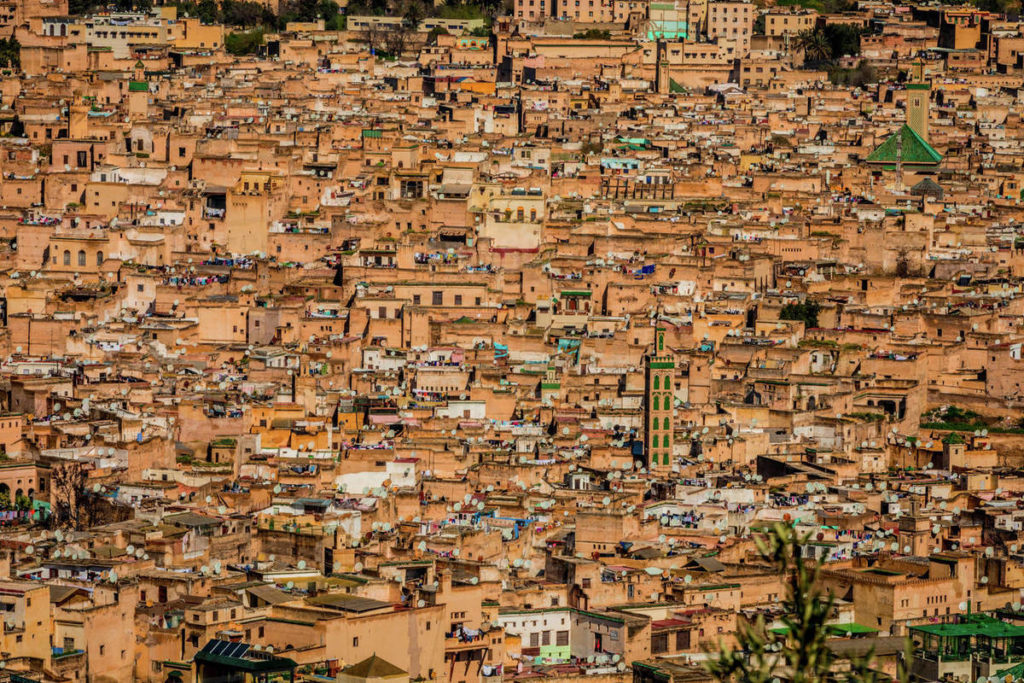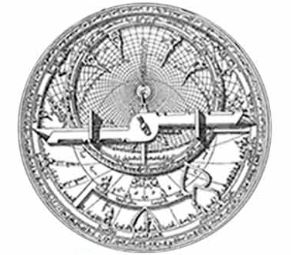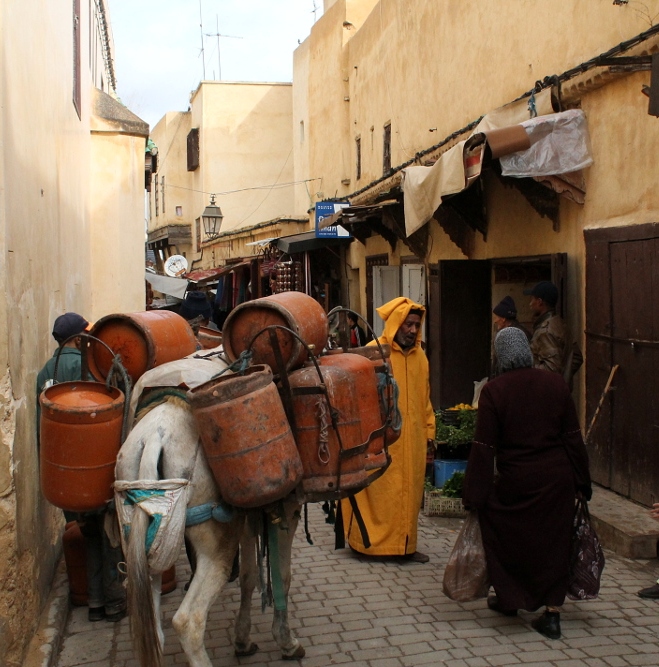
Mesopotamia and the Nile Valley are distinguished by a historical development founded upon agriculture as a primary source of civilisational progress. The agricultural village played an essential role in the formation of civilisation, and it could be said that it constituted a transitional period between nomadism and urbanisation.
WHILE THE CULTURES of the desert, the country and the city are dynamic entities that change over time, the pace in which modernity is accepted ranges from the slowest in the desert, to the swiftest in the city – which demonstrates vigorous development and is the source itself of ongoing modernisation. The culture of the desert and the village, on the other hand, remains incapable of rapid modernisation and serves as a repository of old, inherited and sacralised ideas, customs and traditions.
The direction of civilisational development
According to V. Gordon Child[1] agriculture created rural stability and urban revolution subsequently led to the emergence of the first cities in Mesopotamia and the Nile Valley. Max Weber[2] also links the development of cities historically to economics, politics and religion, and considers them as a product of how agricultural settlements developed into centres of exchange and gathering. The city, then, represents not merely a spatial expansion, but a qualitative transformation from a traditional (village) society to a modern (civil) society.[3] The ancient cities were the centre of political, religious, commercial and artistic and cultural power. Villages were the main source of food production.
On the basis of the superiority of civil culture, this natural shift is for the better. The transformation is one that continues over time: at the outset of civilisational progress there was no concept of a city and a village, but this division began to develop with the advances made in man’s abilities to understand and use nature. The village is a necessary prerequisite for the city, something which is not the case for the desert. Accordingly, the development of the city marches in step with the development of the village.
Here the evolutionary process is both reciprocal and inseparable, and this is what we find in the West. Although the village is less urbanized than the city, its mutual relationship with the city maintains it in a state of constant modernisation. The village is quite close to the city in terms of its formation, its services and the culture of its inhabitants. Figure 1 illustrates the circular process of development, whereby there is a continuous development between the city and the countryside, in that the countryside represents the agricultural aspect (food supply) of what is a continuous process of development.

Figure 1: The natural evolution of a sociocultural pattern.
The contemporary city and countryside
The modern city is characterized by various developing aspects that contribute to improving its residents’ quality of life. The basis is an organized urban planning that includes wide streets, green areas and neighbourhoods constructed in a way that balances housing with the provision of services. One of its most prominent features is advanced means of transportation, since the provision of underground rail networks, smart buses and paved roads ease mobility and reduce congestion.
The modern city also relies on technology in various fields such as e-management, smart surveillance systems and high-speed internet services, all of which contribute to improving the lives and the convenience of citizens. These cities also focus on environmental sustainability through their use of renewable energy, recycling and measures to reduce pollution. Nor do they lose sight of social and cultural aspects, since they provide advanced health and education centres, as well as recreational and cultural facilities that promote community. All these features make the modern city an ideal environment in which to live, work and grow.
The culture of the village is having a significant impact on managerial and construction competences in the city
The contemporary village also has its advantages. It provides a unique blend of peace and natural beauty, alongside manifestations of progress and sophistication. It offers a healthy and clean environment away from pollution and noise, making it an ideal place to rest and recuperate. Modern villages have also witnessed significant developments in their infrastructure, as they have become equipped with water and electricity networks and paved roads, in addition to the availability of the internet and distance learning.
The contemporary village also makes use of smart agriculture, employing modern technologies that increase the production quality and reduce labour and time. One of its most prominent features is a strong social cohesion, one where co-operation and affection prevail. The cost of living in villages is usually lower than in cities, since there is generally more space available for housing and agriculture. Thanks to these features, the contemporary village has become a desirable option for a sustainable and balanced lifestyle.
If the modern city differs from the modern village in terms of lifestyle and services, both have aspects of progress and development in common. The modern city is known for its dense population, the diversity of its services, the availability of fast means of transportation, for its advanced health and education centres, in addition to its extensive use of technology in various fields.
And despite its simplicity, the village has also undergone remarkable development, with basic infrastructure such as roads, electricity, and the internet, as well as the use of modern technologies in agriculture and daily life. The city is characterized by the rapid pace of life and the abundance of economic opportunities, while the village offers tranquillity, psychological comfort, fresh air and strong social ties. It can be said that the modern city offers vast possibilities for professional advancement, while the contemporary village provides an environment suitable for a stable and healthy lifestyle, and for studied agricultural production, all too meet the needs of specific groups of people according to their lifestyle and priorities.
These characteristics of contemporary urban and rural life are mainly due to the scientific and technical advances developed over time, as shown in Figure 1.
The English model
Figure 1 shows the interaction between the village and the city that lead to the stable development of both. We can see evidence of this in the population growth in England and illustrated in Figure 2.
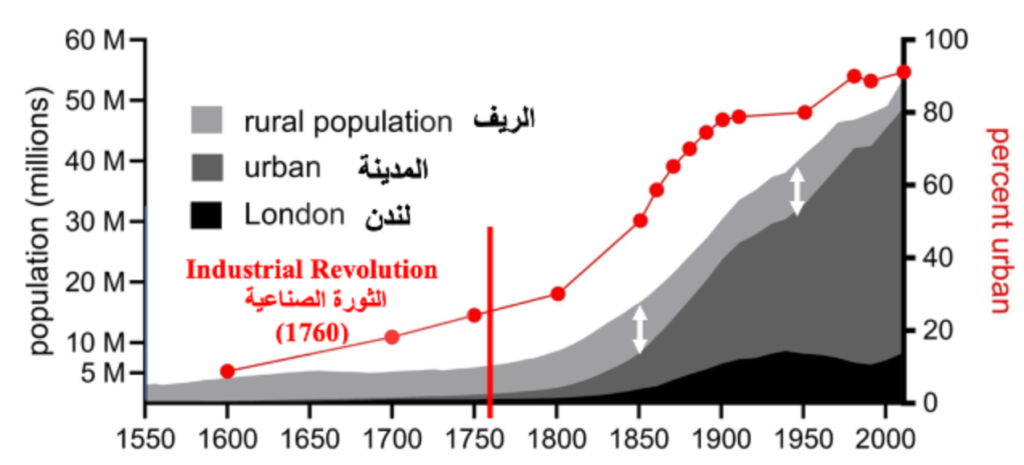
Figure 2: Population development between the country and the city in England.[4]
The population growth curve shows how the origin of the English village predates the city and how the modern city began to grow as a result of the Industrial Revolution (1760). Its population continues to grow. At the same time, the rural population seems to be almost constant over time. That is, there is no evident migration from the country towards the modern city that has caused a decline in population. This is explained by the rural-urban interaction pattern as shown in Figure 1. The constant parallel modernisation between the country and the city does not deplete the country or lead to mass migration towards the city.
The problem of the city’s separate development
In many developing countries, cities and villages are far from modernizing. In the early period of the revival the focus was on cities. Modernisation of the city gained pace while villages were abandoned or evidences very slow levels of modernisation. Unable to provide the means to developing the life of the village or improve its agricultural production, the city is developing rapidly, irrespective of the slow or non-existent development of the village.
This unbalanced acceleration is set to create a time barrier equivalent to the civilisational differential in sophistication between the two arenas. The village continues to be a vital supplier of the city’s agricultural products, but without the city itself providing the village with the necessary means to develop life there. And on a cultural level the village looks set to become an enormous refrigerator for stocking up stores of the distant past. This is creating a contradiction between village life and city life, something which in itself is causing a huge social problem.
Since, compared to the city, life in the village is difficult there is an inevitable displacement of population towards the city. Figure 3 shows this abnormal transition from village to city and we can see how clear is the difference between natural transitions illustrated in Figure 1 and this abnormal mass migration in Figure 3.

Figure 3: Abnormal Mass Migration
In the Middle East, this problem emerged in the countries that were formed after the First World War and were part of the Ottoman Empire. These newly formed states were largely destitute outside some of their cities. There was, in essence, a large cultural difference between the country and the city, in that these cities saw a relative development over and above the villages that belonged to them.
Declining rural population
UN statistics show that as of 2010, the majority of the world’s population lives in rural areas. There has been a decline in the rural population from around 2010 and an increase in the urban population at the global level, as shown in Figure 4. This may be attributed to the cultural difference between the city and the country, as we have already indicated. Figure 4 also gives a comparison between the UN Census[5] and the situation in rural areas in England that we have referred to in Figure 2.
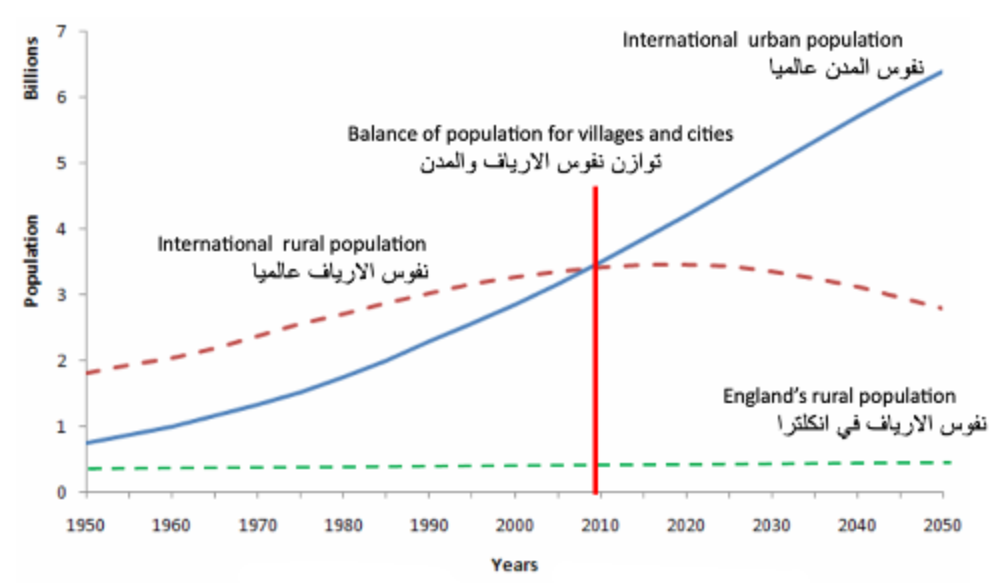
Figure 4: Global population growth in both rural and urban areas (towards urbanization)[6]
The more that human society develops, the less difference there will be between a village and a city. In developed societies, that is, those that have transformed naturally (the English model), one may not find much difference between rural and urban lifestyles. And the same goes for culture, in that features of urban life have shifted to the country without rural inhabitants being required to move to the cities. The villages thus gradually developed by themselves. In terms of cultural orientations, openness and adoption of modern (civil) standards in work and life, the rural population is no different from the urban population. Any upsetting of the balance between the city and the country causes an imbalance in sustainability.
The city and the country in the Middle East
Villages in Middle Eastern societies display a unique social, religious and cultural character, in which a spirit of co-operation and solidarity prevails among the inhabitants, with strong family ties reflecting the unity and cohesion of the community. As in any village, agriculture and livestock breeding are among the most important of its economic activities. This lends it a productive stamp that is linked to the land and to nature. Rural life is simple and quiet, far removed from the hustle and bustle of cities. Religious obligations and traditions are clearly evident in the lives of the villagers, with mosques playing a pivotal role in daily life, along with a respect for inherited customs and values. The villages furnish a kind of self-sufficiency through their agricultural produce and their traditional craftwork, and this enhances their stability. In this way, the village in the Middle East is an authentic example of a balanced life that combines simplicity, belonging and values.
Unbalanced acceleration is set to create a civilisational differential between the two arenas
From another angle, while the city is characterized by its fast pace of life, its advanced infrastructure, the spread of technology and its diverse economic opportunities, the village – as we have seen – retains its simple character: strong social cohesion and reliance on traditional agriculture and crafts. The city in the Middle East is closer to the Western model, due to the similarities in modern lifestyles, its multi-nationality, the presence of modern institutions and its reliance on advanced technologies in various fields. The villages, on the other hand, remain closer to their simplicity and local identity, and these express the cultural and social roots of Eastern society. Cities in the Middle East thus tend to approximate to modern cities. This shows the major difference between the western village (in England) and the eastern village. The latter lacks modern services in the fields of education, medicine and urban planning and the like. Here two different cultures are standing out: an urban culture and a rural culture. Some of the characteristics of either of these cultures can be illustrated in Table 1 below.
Table 1: Outlines of difference between the city (1) and village (2) cultures
| Points of strength | Points of weakness | |
| 1 | Demographic and cultural diversity – the presence of institutions (education, administration, trade unions) – openness to pluralism and modern ideas (ability to accept social modernisation) – acceptance of law and public order. | The potential for class divisions – weak traditional links at times. |
| 2 | Strong social solidarity, values of co-operation and assistance, relative stability in relations, spatial stability. | Occasional closure to the small community, resistance to rapid change, the dominance of tradition at the expense of the law (inability to accept social modernisation). |
The examples of Iraq and Egypt
When the state of Iraq was formed after World War I the majority of Iraq’s population inhabited rural areas. The city was never any more developed than the country. This was due to Iraq’s history. Figure 5 shows the level of population distribution between the urban and rural areas. The domination of the rural population lasted until the mid-1960s, and its decline is attributed to mass migration towards the cities. This migration followed an abnormal pattern as is shown in Figure 3.
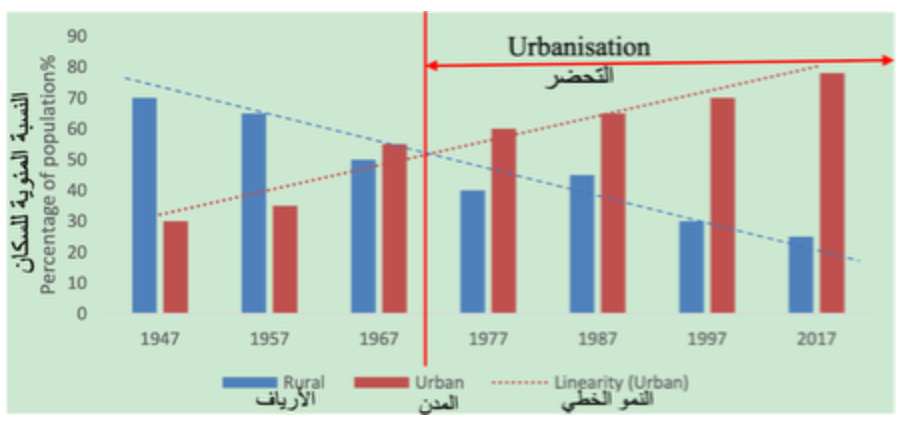
Figure 5: Population Change in Iraq[7]
As for Egypt, the land is characterized by its fertile valley – the reason for the formation of agricultural villages. It is thus natural that villagers form the majority, as is the case in Iraq. Figure 6 illustrates a statistical distribution similar to that of Iraq in terms of urban population growth and rural population decline. This is consistent with the global change as shown in Figure 3.
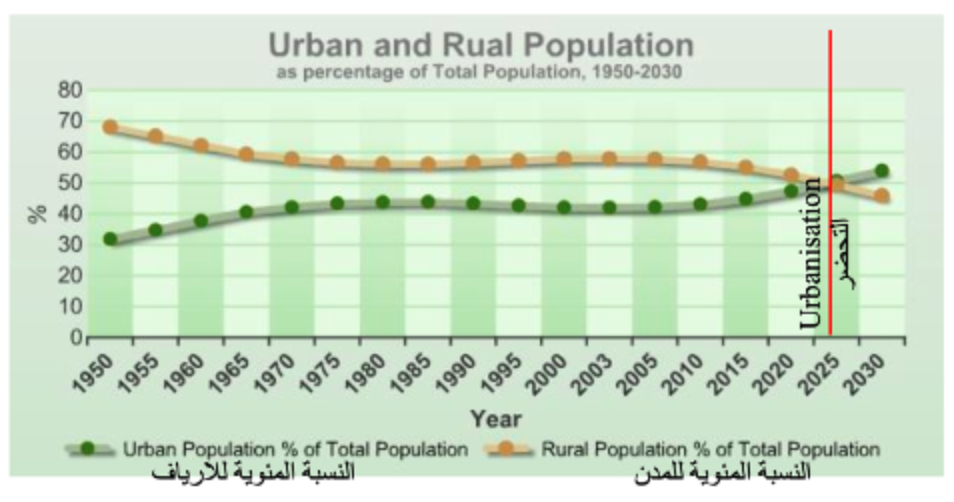
Figure 6: Population Change in Egypt [8]
As in Iraq, where rapidly modernising cities were unable to transfer the experience of modernisation to the villages, mass migration took place.
“Real Egypt is not the rich neighbourhoods of Cairo and Alexandria, but the 1,200 official districts and the 4,000 villages and their satellite ḥiṣaṣ, kufūr and nujū‘ hamlets; we cannot allow these areas to perish, because when they end Egypt simply ends. Revival of those areas of urban and rural areas is potentially under a state of injustice and exploitation”.[9]
Unnatural mass migration (Figure 2) is what is putting an end to the villages and destroying civilisation.
As a result of mass migration, levels of urban and rural population parity occurred around 2009 at the global level (Figure 4). In Iraq this parity occurred in the mid-1960s (Figure 5), while for Egypt, it is expected to occur sometime between 2025 and 2030 (Figure 6). The difference may be due to the nature of the country’s key economic resources. Since the beginning of the 20th century oil entered into Iraq to compete with its agriculture activity which constituted the pillar of the village economy, and the economy of Iraq has now transformed into a rentier (oil dependent) economy.
According to published statistics the increase in city populations in Iraq and Egypt is due to contemporary villagers, as shown in Figure 2. In other words, the culture of the village remains very active among the inhabitants of the city. This is having a significant impact on managerial and construction competences in the city. It is leading to a return of the culture of the past (stored up in the villages), acting in competition with the culture of the nascent present as hitherto represented by the culture of the city.
Problems of mass migration from the country to the city
The following are some of the problems of mass migration confronting the migrants or the systems they are migrating to:
Pressure on urban infrastructure and public services
The rapid influx of population into cities is creating bottlenecks in water supply, sanitation, transportation, housing, electricity and education.[10] In some Arab cities a large portion of the urban population lacks adequate access to sanitation services, and water supplies are precarious.[11]
The emergence of slums and sub-standard housing
Due to the high cost of housing compared to the financial capacity of those coming from the country, many resort to living in neighbourhoods lacking appropriate building planning or facilities.[12] Rapid expansion without considered planning is leading to substandard construction or building carried out in very remote suburbs.[13]
High unemployment or informal work
Rural immigrants often cannot find adequate formal employment, and they are thus forced to work in the informal sectors or for low wages.[14] The skills required in cities are not the same as those of rural migrants (lack of training, limited experience).[15]
High cost of living and pressures on living standards
Living in the city is most often more expensive, with the housing, transportation and service costs. Those coming from the country frequently suffer, especially at the beginning.[16] Lack of access to social services (education, health) potentially increase the gap.[17]
Social and cultural tensions
Differences in customs, values and social backgrounds between rural and urban dwellers can lead to a sense of isolation or marginalisation.[18] In some cases, rural displacement is leading to disputes over land use, services or even a competition for jobs.[19]
Degradation or decline of rural areas
With the displacement of youth and labour, villages are vulnerable to the loss of an active workforce, weakening local agricultural and economic productivity and causing a decline in rural services, a lack of investment, and the deterioration of rural infrastructure.[20]
The impact of climate change and conflicts
Drought, water shortages and changes in rainfall patterns are negatively affecting agricultural productivity and the livelihoods of rural populations, pushing them towards the cities.[21]
Lack of respect for standards
When the immigrant majority becomes statistically dominant, democratic systems allow them to run the state and its core institutions through their parties. And this is where the problem of not having the necessary qualifications and competences may arise. It is leading to a decline in the performance of the state and its institutions, as it begins to retreat from modern international criteria and standards which the state had hitherto adopted in its systems.
In conclusion, great attention and care is needed for rural areas and their inhabitants, to reduce the cultural gap between the country and the city. The country constitutes a major, vital part of the contemporary state.
[1] V. Gordon Childe,What Happened in History , Aakar Books, June 2016 [ISBN-10: 9350023695] and Man Makes Himself, Man Makes Himself , Signet, September 1951 [ISBN-10: 0451615085].
[2] Max Weber, The City, The Free Press, January 1966 [ISBN-10: 0029342104].
[3] Louis Wirth, ‘Urbanism as a Way of Life’, American Journal of Sociology Vol. 44, No. 1 (Jul., 1938), pp.1-24. The University of Chicago Press, 1938.
[4] Romola Davenport , The first urban society, https://www.campop.geog.cam.ac.uk/blog/2024/10/31/urban-society/ .
[5] United Nations The (UN) (2010). Population Division of the Department of Economic and Social Affairs of the United Nations Secretariat, World Population Prospects: The 2006 Revision and World Urbanization Prospects: The 2007 Revision. http://esa.un.org/unup, Accessed on 11th March 2010.
[6] United Nations (UN) (2010). Population Division of the Department of Economic and Social Affairs of the United Nations Secretariat, World Population Prospects: The 2006 Revision and World Urbanization Prospects: The 2007 Revision. http://esa.un.org/unup , Accessed on 11th March 2010.
[7] Central Statistical organization; Statistical Annual Abstract [source: World Bank 2014]. Journal of Sustainable Development; Vol. 16, No. 5; 2023 [ISSN 1913-9063 E-ISSN 1913-907]..
[8] Transformations in Popular Attitude, Customs and Beliefs: A Framework for the Development of Poor Rural Settlements in Egypt. Data compiled from World Urbanization Prospects, 2003, http://esa.un.org/unup/index.asp?panel=1 .
[9] Ibid.
[10] Hanafi, A. M., ‘How Rapid Urbanization Adds to Woes of the Mideast’, Arab News, 14 May 2006, https://www.arabnews.com/node/284684?utm_source=chatgpt.com .
[11] Ibid.
[12] Norman, K., Gil, A. M., and Barron, R., The Climate Change-Conflict-Displacement Nexus in the MENA Region, Baker Institute, 21 May 21 2024, https://www.bakerinstitute.org/research/climate-change-conflict-displacement-nexus-mena-region?utm_source=chatgpt.com .
[13] Ibid.
[14] Ibid.
[15] Al Rakeezeh Organisation, Rural Challenges and Urban Migration in the Iraqi Countryside, 30 October 2023, https://al-rakeezeh.org/en/rural-challenges-and-urban-migration/?utm_source=chatgpt.com .
[16] Abdukadir, A. A. and Osman, A. I., Social and Economics Perspective of Rural-Urban Migration: A Case Study Middle and Lower Shabele Regions in Somalia, International Information and Engineering Technology Association, 29 May 2024 https://doi.org/10.18280/ijsdp.190507 .
[17] Norman, K., Gil, A. M., and Barron, R., Op. cit.
[18] Ibid.
[19] Ibid.
[20] Al Rakeezeh Organisation, Op. cit.
[21] Dorrer, K., ‘Water Scarcity and Armed Conflict Shaping Migration Patterns in the Middle East and North Africa’, The Diplomatic Envoy, 14 September 2022. https://blogs.shu.edu/thediplomaticenvoy/2022/09/14/water-scarcity-and-armed-conflict-shaping-migration-patterns-in-the-middle-east-and-north-africa/?utm_source=chatgpt.com .
